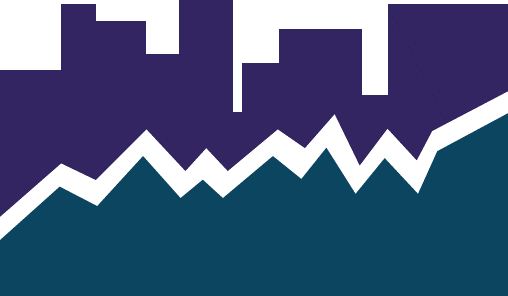The Monday Morning Quarterback
A quick analysis of important economic data released over the last week
By Elliot D. Pollack & Co. | Rose Law Group Reporter
Total nonfarm payroll employment rose by 943,000 in July, following a similar increase in June (+938,000). These increases in employment should add a cushion to any potential negative impact from the coronavirus Delta variant. Employers are creating jobs at the best pace in a year and the unemployment rate fell to 5.4% in July from 5.9% in June. This is the lowest rate since the shutdown of the economy in March 2020.
Nonfarm payroll employment in July is up by 16.7 million jobs since April 2020 but is still down by 5.7 million, or 3.7 percent, from its pre-pandemic level in February 2020. In July, notable job gains occurred in leisure and hospitality, in local government education, and in professional and business services.
As of mid-July, there was little evidence that the Delta variant and the recent surge in cases was slowing the U.S. economic recovery. The availability of vaccines, pent-up demand for goods and services, and government stimulus legislation is helping to push the recovery. With the amount of government support decreasing, the private sector is picking up the lion’s share of the recovery. However, some observers see some risk on the horizon from the Delta variant. A number of companies now are delaying their plans for employees to return to the office.
One important factor in the recovery of the hotel and airline industries is the return of corporate travel. A forecast from Deloitte suggests that travel will pick up in the second half of 2021. However, even with the increase, business travel will only be between 25% to 35% of pre-pandemic levels. The delay in reopening offices due to the Delta variant could seriously impact corporate travel and further dampen demand through 2022. Passenger traffic for June 2021 at Sky Harbor is only off 4.8% from 2019 levels. Most of this is leisure traffic. As kids head back to school and leisure demand subsides, hotels and the airlines will need to see corporate travel increase to continue the recovery in these important industries.
U.S. Snapshot:
- The positive momentum in employment continued in July. Total non-farm employment increased by 943,000, combined with the upward revision of 31,000 jobs in May and 88,000 in June, added to good in July’s employment report. All of the sectors had job gains in July, led by Leisure & Hospitality with 380,000 and Government with 240,000.
- The employment recovery has been going for 15 months and has recovered 16.7 million jobs or 74.5% of jobs lost through July. None of the super sectors have fully recovered the jobs lost, but Trade, Transportation, & Utilities, Other Services and Financial Activities have recovered over 80% of the jobs lost.
- The unemployment rate declined 0.5% to 5.4% in July. This remains above the pre-pandemic level of 3.5%, but well below the 14.8% level seen in April of last year. Since the recovery started, the labor force has grown by 4.9 million people. Nearly 8 million that left the labor force during the pandemic.
- ISM released the July levels for both their manufacturing and service indices. Manufacturing saw a decline for the third consecutive month, with the index falling to 59.5% in July from 60.6% in June. July’s level was the second-lowest reading of the year. On the other hand, ISM’s services index increased to 64.1% and reached an all-time high level for the series. Both indices remained well above the 50% level and continue to signal growth in their respective sectors.
- Consumer credit grew by $37.6 billion in June. This was the biggest increase since December 2010. Non-revolving led the way with $19.8, but revolving credit (credit cards) jumped $17.9 billion, the largest increase since January 2006.
- Construction spending has a slight increase of 0.1% in June. All the growth came from private construction, which saw a 0.4% increase, while public construction declined by 1.2% for the month.
Arizona Snapshot:
- The Cromford Report released July’s data for the Greater Phoenix resale real estate market. The median sales prices continued to increase and reached the $400,000. It was up 27% from a year ago. Active listings increased for the second month in a row but remained 26.9% below a year ago.
- According to ABI Multifamily 8 apartment communities with 1,473 units came online in the second quarter 2021 in Greater Phoenix. Currently, there are 140 communities with 33,554 units under construction and 96 projects planned.












